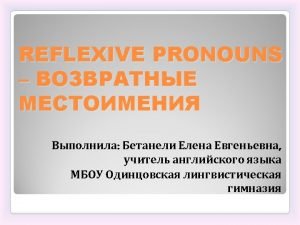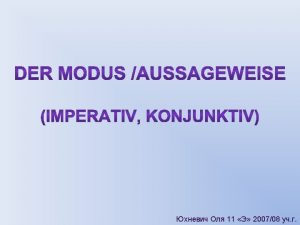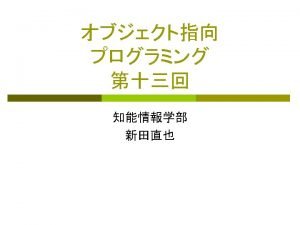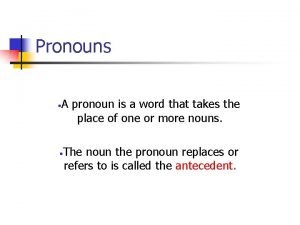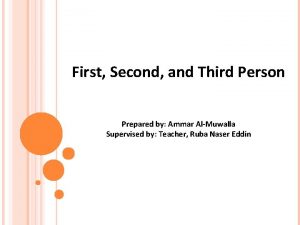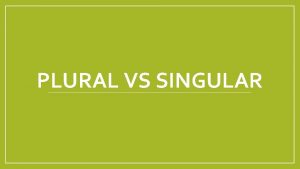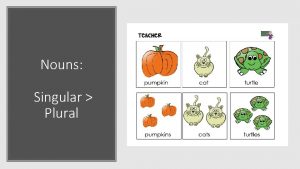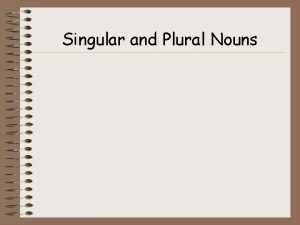PERSON SINGULAR PLURAL 1 I myself ourselves 2







- Slides: 7


PERSON SINGULAR PLURAL 1 -I myself ourselves 2 - yourself yourselves 3 – he/she/it himself/herself/ themselves itself FORMS

We use a reflexive pronoun when the subject and object are the same. Tom cut himself while he was shaving. (not Tom cut him. ) Том порезался, пока брился. We use reflexive pronouns after the following verbs: - behave, burn, cut, enjoy, hurt, kill, look at, laugh at, introduce, dry, teach, etc. The party was great. We enjoyed ourselves. - be, look, seem Helen doesn’t seem herself. – Хелен сама не своя.

We don’t use reflexive pronouns after the following verbs: feel, relax, concentrate. I feel great after having a swim. - Я хорошо себя чувствую после плавания. wash, shave, (un)dress, afford, complain, meet, wake up etc. The purse was expensive and I couldn’t afford it. BUT! When we talk about little children or animals we use reflexive pronouns after the verbs wash and dress. She’s been teaching her little son how to dress himself.

- reflexive pronouns and each other: Tom and Ann stood in front of the mirror and looked at themselves. (Tom and Ann looked at Tom and Ann in the mirror) But: Tom and Ann looked at each other. (Tom looked at Ann and Ann looked at Tom). You can use one another instead of each other. Sue and Ann don’t like each other/one another. - We also use reflexive pronouns to give emphasis to the noun. They are often called emphatic pronouns. She herself prepared everything for the party. (without help). - Она сама приготовила все для вечера. - On one’s own /by oneself both mean alone. I like living on my own/by myself. – Я люблю жить одна. STUDY THE DIFFERENCE


